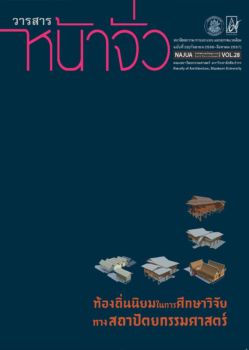Intensity and Identity of the place: the role of public-private interface in Nezu, Tokyo
Keywords:
public-private interface, identity, intensity, difference, assemblageAbstract
In urban design and urban research, it is necessary to strive not to lose sight of the complexity of the urban, which tends to get one of its fullest reflections exactly at public-private interface. In order to do so, it is important to maintain awareness that public-private interface is a spatio-temporal category, that express the complexity of place and its character.
This paper focuses on the spaces defined by transition between public and private produced along ordinary practices of everyday life. The research explores the ways in which public-private interface (re) creates the identity of one concrete place. Nezu is, arguably, an outstanding precinct of Tokyo. Nezu shows remarkable resilience and manages to embrace change, while keeping an atmosphere which is broadly considered as directly descendant from that of old Edo (former Tokyo) shitamachi. Distinctive features of public-private interface in Nezu seem to be an important ingredient in formation of that evolving, but firmly anchored identity of Nezu. That is why this paper addresses the question how exactly do public-private interfaces contribute to the shitamachi character of Nezu.
The paper opens with discussion on the relationships between identity of the place and public-private interface within the concepts of intensity, difference and assemblage. It briefly presents the principal method of inquiry, based on assemblage theory, which links material and social elements of place, explores them by focusing at relationships between elements, and defines differences in intensities as crucial for the emergence of identity. The analysis focuses on everyday life, and thus does not include landmark structures of Nezu. The paper presents three ordinary streets of Nezu which have experienced the lowest level of physical change since Edo era. The analysis is based on detailed mapping and quantification of various elements that make public-private interface, using the methods of photographic survey, visual permeability and typological analysis of public-private interface.
The results show that the heterogeneity and discontinuity of interfaces constitute an important feature of those streetscapes. Although not a single building in those streets dates back to Edo era, the kind and the intensity of experience of those places, proportions, certain aspects of materiality create familiar tensions between public-private interfaces, opening the possibility for the emergence of an identity which resonates with the widespread mental images of shitamachi. Thus – in the core of Nezu, Edo re-emerges.





